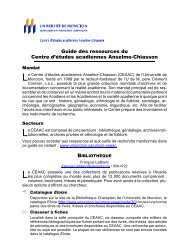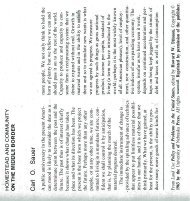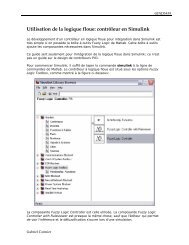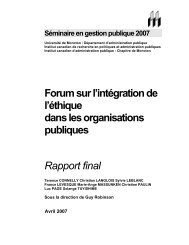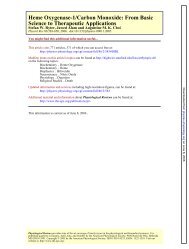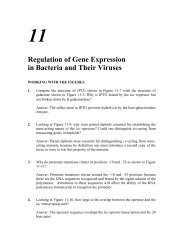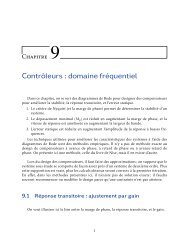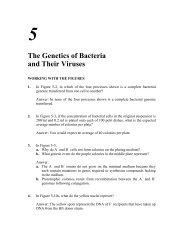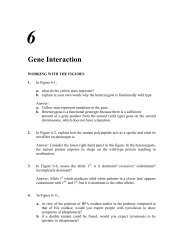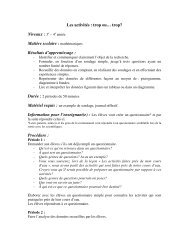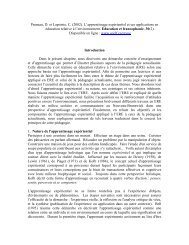IGA 8/e Chapter 2
IGA 8/e Chapter 2
IGA 8/e Chapter 2
You also want an ePaper? Increase the reach of your titles
YUMPU automatically turns print PDFs into web optimized ePapers that Google loves.
18 <strong>Chapter</strong> Two(1 – 1 / 6 )(1 – 1 / 6 )(1 – 1 / 6 ) = ( 5 / 6 ) 3 = 125 / 216.e. The easiest way to approach this problem is to consider each die separately.The first die thrown can be any number. Therefore, the probability for it is1.The second die can be any number except the number obtained on the firstdie. Therefore, the probability of not duplicating the first die is 1 – p(firstdie duplicated) = 1 – 1 / 6 = 5 / 6 .The third die can be any number except the numbers obtained on the firsttwo dice. Therefore, the probability is 1 – p(first two dice duplicated) = 1 –2 / 6 = 2 / 3 .Finally, the probability of all different dice is (1)( 5 / 6 )( 2 / 3 ) = 10 / 18 = 5 / 9 .43. In the pedigree below, the black symbols represent individuals with a very rareblood disease.If you had no other information to go on, would you think it more likely that thedisease was dominant or recessive? Give your reasons.Answer: You are told that the disease being followed in this pedigree is veryrare. If the allele that results in this disease is recessive, then the father wouldhave to be homozygous and the mother would have to be heterozygous for thisallele. On the other hand, if the trait is dominant, then all that is necessary toexplain the pedigree is that the father is heterozygous for the allele that causesthe disease. This is the better choice as it is more likely, given the rarity of thedisease.44. a. The ability to taste the chemical phenylthiocarbamide is an autosomaldominant phenotype, and the inability to taste it is recessive. If a tasterwoman with a nontaster father marries a taster man who in a previousmarriage had a nontaster daughter, what is the probability that their firstchild will be:(1) A nontaster girl(2) A taster girl(3) A taster boyb. What is the probability that their first two children will be tasters of eithersex?Answer:a. By considering the pedigree (see below), you will discover that the cross inquestion is T/t T/t. Therefore, the probability of being a taster is 3 / 4 , andthe probability of being a nontaster is 1 / 4 .




